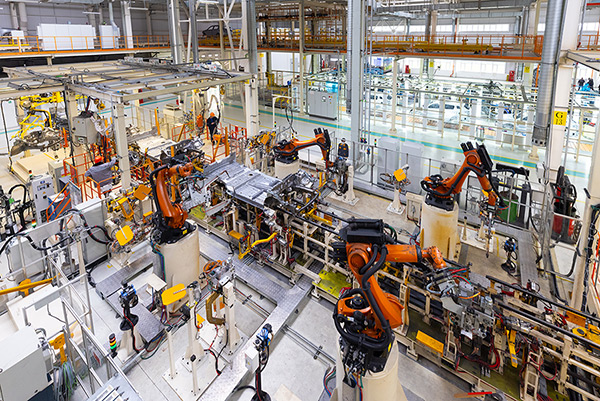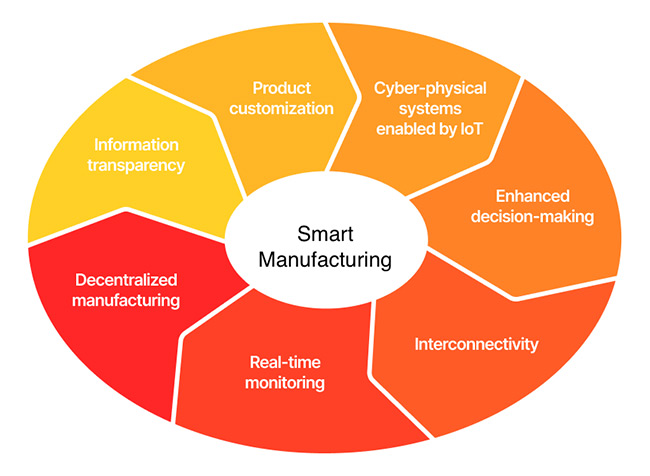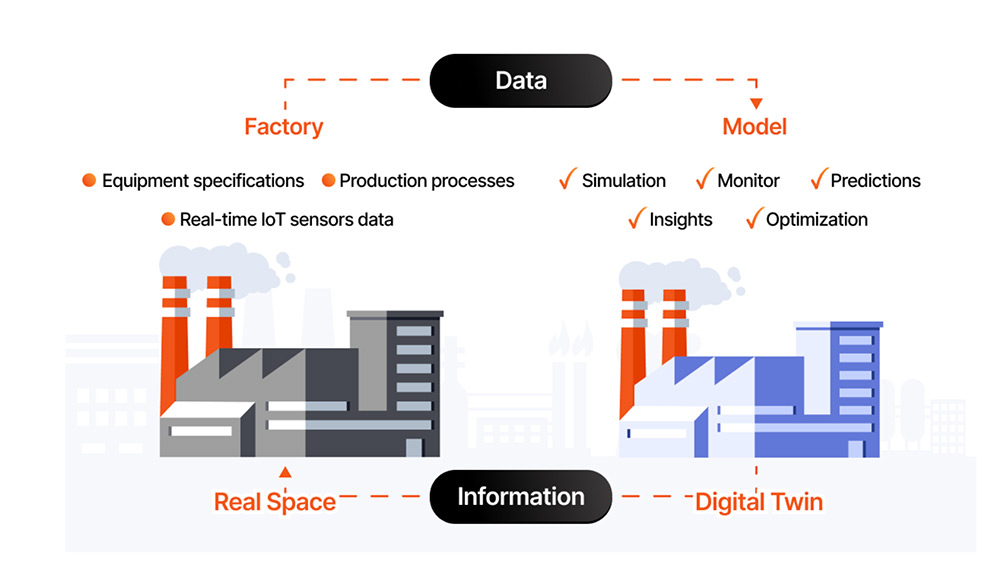This is a guest post from Intelliarts, a provider of technology consulting and software engineering services, which stands at the forefront of innovation and digital transformation initiatives. Combining engineering excellence with deep industry expertise, Intelliarts builds end-to-end ML-powered solutions that help partners compete in today’s digital economy.
 Industry 4.0 has arrived and it’s driving automation of processes globally and a holistic approach to business. Industry leaders across manufacturing use digital technologies like AI, machine learning, IoT, and others to transform into agile enterprises beyond the factory floor.
Industry 4.0 has arrived and it’s driving automation of processes globally and a holistic approach to business. Industry leaders across manufacturing use digital technologies like AI, machine learning, IoT, and others to transform into agile enterprises beyond the factory floor.
If you want to follow the example of Bosch, Audi, or other frontrunners, who have already introduced smart manufacturing into their operations, it’s high time to talk about building a smart factory and optimizing your production for intelligence and efficiency.
What is Smart Manufacturing?
A smart factory embodies adaptability, self-optimization, and continuous monitoring. It uses innovations and digital technologies to monitor different metrics, identify bottlenecks, and swiftly resolve issues, ensuring real-time problem-solving and automation.
Although transitioning to smart manufacturing may seem challenging, it doesn’t have to. The answer is simple: take it slower, one change at a time. And thus, this digital journey towards a smart factory will become convenient for your company, with changes that are thoughtful and reasonable.
Remember: smart manufacturing isn’t your final goal. It’s a continual journey of adaptation and improvement.
Characteristics of Smart Manufacturing
 Now let’s consider the characteristics of smart manufacturing so you know what you should strive for. If we’re speaking about the basic features of smart manufacturing, we usually mention:
Now let’s consider the characteristics of smart manufacturing so you know what you should strive for. If we’re speaking about the basic features of smart manufacturing, we usually mention:
- Cyber-physical systems (CPS): CPS include intelligent components, objects, and software with embedded computing and storage capabilities. Enabled by Industrial IoT (IIoT), CPS is the foundation of smart manufacturing, helping to bring the physical and digital worlds together.
- Real-time monitoring: IoT and IIoT enable real-time monitoring for timely responses to factory floor changes and reduction in resource waste.
- Interconnectivity: Smart manufacturing entails seamless collaboration between integrated operational technology (OT) and information technology (IT), achieved through interconnected sensors, devices, and machines on the factory floor.
- Decentralized manufacturing: Solutions like CPS allow machines to have autonomy and perform tasks, eliminating reliance on central computers. This approach gives more flexibility to local operators, enabling them to respond to changes promptly.
- Empowered decision-making: This stems from embedded sensors and connected machinery, leveraging IoT and IIoT to generate extensive data. Analyzing this data allows manufacturers to uncover historical trends and identify patterns to be able to make informed production decisions.
- Better information transparency: This is achieved through sensor-collected data, offering a deeper insight into manufacturing processes and facilitating data-driven decision-making.
So, how can you build a manufacturing facility with all these characteristics? Read on to find out.
Embracing Smart Manufacturing in Your Operations
To begin with, there are no strict guidelines on how to initiate smart manufacturing in your operations. As said, this should be your own journey where you make changes in whatever order best suits your facility and according to your budget and time restrictions.
Still, we emphasize five specific areas that demand your attention to make your transition to smart manufacturing smoother and increase the likelihood of success:
1. Strategy
To ensure meaningful changes in your enterprise, begin with a well-defined plan, as efforts without strategy lack significance. Initiate improvement by selecting a specific asset, optimizing, and digitizing it. The most effective way is to treat these changes as your MVP (Minimum Viable Product), where you focus only on the most essential changes that can create value. Scale or refine based on the lessons learned as you progress.
In case you as a manufacturer have doubts about creating a strategy for smart manufacturing, you can request the help of technology consulting experts. These companies can advise on some important points like budget or timeline, prioritization of different initiatives, technologies, etc.
2. Equipment and IT
When transitioning to a smart factory, leverage existing resources for maximum effect. We recommend focusing on empowering the manufacturing facility rather than completely changing it. To explain further, manufacturers don’t need to invest in totally new equipment and assets. Instead, they should think over how to enhance existing tools and technologies to improve their efficiency and usability.
Let’s imagine your factory has a corporate mobile app. A good idea is to facilitate data gathering and sharing via the app to make it more user-friendly. This way, employees will be more likely to use the application so you can collect more data to enhance decision-making.
3. People
 It’s essential to remember that people are your most valuable asset and the driver behind the change. No matter how automated the processes are, a manufacturer can fail if workers don’t accept or refuse to adapt to changes.
It’s essential to remember that people are your most valuable asset and the driver behind the change. No matter how automated the processes are, a manufacturer can fail if workers don’t accept or refuse to adapt to changes.
The introduction of smart manufacturing will reshape the way your employees work, leading to an increased demand for specialists skilled in innovations like IoT, AI, data visualization, and others. To overcome this challenge, offering advanced training and reskilling opportunities is critical. Enhancing employee satisfaction through professional development is essential, as studies show that 70% of workers who leave their jobs are dissatisfied with their career opportunities. 95% of them would stay if offered opportunities for career advancement.
An impactful strategy is retraining existing staff rather than hiring new specialists. This can help manufacturers create a highly motivated and loyal team. Maximize support for the transition to smart manufacturing by:
- Creating value for employees
- Implementing only reasonable changes in the working environment
- Automating tasks with technology
If you prioritize empowerment over replacement, people on the factory floor will embrace changes faster, and the whole transition will go smoother.
4. Data
Data is the driving force behind the dynamic transformations in a smart factory, impacting your processing, capturing information about mistakes, and providing manufacturing operators with important insights. It enables the development of machine learning-based predictive models to predict equipment failures and reduce downtime.

Smart manufacturing stresses the use of data but avoids unstructured and unprocessed data, which brings no value to manufacturers. A smart factory should collect, structure, store, and analyze information efficiently. By configuring processes to provide real-time insights, a smart factory can proactively address issues such as downtime or bottlenecks.
A manufacturer can use this information to implement a digital twin, which is a digital replica of assets, processes, or even the entire factory, to further optimize the factory's operational efficiency.
5. IT/OT integration
Connect physical assets with digital ones in your operations by merging information technologies with operational technologies. We recommend using IoT and IIoT for remote control, employing AI and machine learning for automation and optimization of factory processes, and implementing predictive maintenance strategies.
For example, some automotive companies use virtual and augmented reality for remote training and maintenance services, saving time on commuting. Others use IoT devices for monitoring the transportation of temperature-sensitive products. Real-time location systems (RTLS) can automate pallet tracking at manufacturing facilities, which usually move between warehouses.
And there are many other examples of the potential advancements in smart factories in the case of IT/OT convergence on the factory floor. As mentioned, smart manufacturing equals interconnectivity, which means communication extends beyond the workplace to include suppliers, customers, and managers. This benefits all stakeholders with real-time information exchange.
Getting Started with Smart Manufacturing
Modern-day enterprises are evolving to embrace smart factories, the approach that allows companies to optimize digitalization by bridging IT and OT. As the new norm, smart manufacturing benefits companies with:
- Enhanced productivity
- Improved product quality
- Better decision-making
- Cost reduction
- Reduced waste
It’s critical to note that smart manufacturing doesn’t want to replace humans. Vice versa, this approach aims to enhance the effectiveness and innovation of human professionals in their tasks through automation. This synergy of human efforts and AI is commonly referred to as hybrid intelligence, and its illustrative cases are already visible in smart factories of industry leaders.
If you’re interested in learning more about how to successfully implement smart manufacturing into your operations, attend the Smart Manufacturing Experience.
